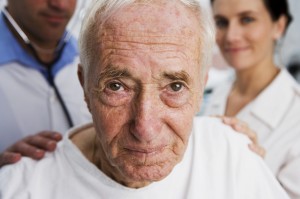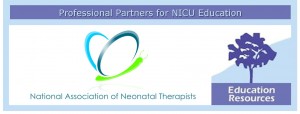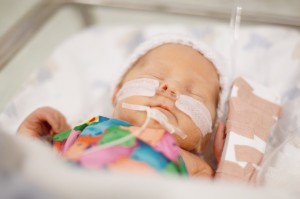
Education Resources offers many evidence-based, clinically relevant continuing education unit (CEU) courses for occupational therapists (OTs), physical therapists (PTs) and speech-language pathologists (SLPs) working in the Acute Care setting, Critical Care setting and beyond. Distinguished, internationally renowned faculty who are leaders in their field teach our courses for an engaging and high-quality experience.
Our courses allow you to rediscover your passion for the profession while providing valuable knowledge to improve your patient care. Our respected faculty and flexible course options give you a valuable education while suiting your busy care schedule for acute or critical care patients.
Acute Care Continuing Education
Continuing education courses help occupational therapists, physical therapists and speech-language pathologists enhance their knowledge while maintaining their necessary credentials and licenses. Some benefits of ERI’s acute care physical therapy courses include:
- Receiving specialty certifications: Our courses allow students to specialize in specific areas of acute care by pursuing additional certifications.
- Maintaining American Speech-Language-Hearing Association (ASHA) and state license: Many states and ASHA require therapists and pathologists to complete CEUs to maintain their licenses.
- Accessing accurate and updated information: Stay updated on the latest research and practices for your field to continue providing excellent care.
- Reinvigorating passion for care: Hearing from distinguished experts on fascinating care specialties can remind you why you became a PT, OT or SLP.
Experience Exceptional Value With Acute Care CEU Courses
At ERI, we understand that every CEU course for acute care therapy you take is an investment in yourself and your patients. Our online and webinar course offerings will remind you why you love helping patients and encourage you to continue improving your practices to meet their needs.
Loyalty Programs You’ll Love
Take advantage of exclusive loyalty offerings so you can receive discounts and savings on courses throughout the year. Here’s just some ways you can save with ERI:
- Bundle courses and save – the more you purchase, the more you save!
- Group discounts for three or more people on any course
- First time taking a course with us? Take $30 off the price
- Getting ready to take your 4th course with us? You could be eligible for $100 off
- Host a CEU course with your facility and receive discounted rates for staff
Acute Care Continuing Education Online
Our acute care continuing education physical therapy courses will inform and inspire you to continue providing the highest quality of care for your patients. We design our offerings — such as our post-concussion syndrome continuing education course — to incorporate evidence-based practices to help you provide optimal care.
To best fit your needs and schedule, we offer two convenient virtual class options besides traditional lessons.
On-Demand Online Classes
Attend our acute care PT CEU courses online on your schedule with our on-demand courses. All courses include a presentation from an industry expert and a handout you can use to follow along. The courses even include Q&A from participants during the live courses to give you additional insights during the learning process. Throughout the course, you can pause the video to take a break or rewind to review specific information. Participants also have a year to finish the course and pass the post-test.
Live Webinars
Experience engaging, live learning in a convenient virtual format with our live acute care webinars. Join the class from any location as long as you have a steady internet connection. Before the meeting, you will receive an email with a Zoom meeting link for easy class access. During the webinar, follow along with a downloadable handout to enhance the learning experience. This continuing education opportunity doesn’t have a post-test.
Participants receive a CEU certificate after completing the webinar. The certificate appears in your ERI dashboard with options to print or download.
In-Person Courses
If you are looking for a hands-on learning experience, we also offer in-person courses. Our in-person courses use labs, lectures and videos to allow you to practice your technique and enhance your skills and knowledge. Throughout the acute care physical therapy CEU course, you will receive real-time guidance from field specialists and the chance to work with participants who share your passion.
Acute Care Courses for PTs, OTs and SLPs
At ERI, we offer acute care courses to provide continuing education for physical therapists, occupational therapists and speech-language pathologists. Here’s an overview of the course types.
Acute Care Courses for Physical Therapists
Our acute care courses for physical therapists allow you to integrate your rehabilitation skills into the acute care hospital environment. We address situations like limb loss, balance disorders and neonatal care. These courses provide detailed knowledge to address various physical functional impairments through restorative and preventive measures.
Acute Care Courses for Occupational Therapists
At Education Resources, we provide specialized courses to address the particular situations acute care occupational therapists face in their profession. These courses allow you to expand your knowledge of topics like medically stabilizing, offering mobilization and creating patient discharge plans. Our courses cover limb loss, pediatric care and other scenarios often faced in acute care settings.
Acute Care Courses for Speech-Language Pathologists
Speech-language pathologists working in acute care often deal with strokes, head injuries and respiratory issues among a range of patient populations. Our continuing education courses provide instruction on how to evaluate and treat these conditions. We cover topics of value in acute care, like facial retraining, breathing and swallowing.
Why Choose ERI?
Whether you are assisting patients in the intensive care units or emergency room, our courses will provide the knowledge and skills you need to provide the best possible care. Since the creation of ERI over 30 years ago, we have set the standard of continuing education courses.
As a therapist-founded organization for therapists, we know how important it is to provide various learning opportunities. Regardless of whether you choose our virtual or in-person acute care occupational therapy, physical therapy or speech-language pathology continuing education course options, you will experience videos, labs and opportunities for hands-on learning. We will also provide numerous resources you can continually reference in your Acute Care practice.
We take care of every detail, crafting courses with passion. Training focuses on the latest research, giving you applicable knowledge that brings immediate benefits to your work. We’re responsive to your thoughts, questions or suggestions, giving you a say in your continuing education experience.
Our Critical Care CEU Course Offerings
Browse our list of Acute Care Courses, Critical Care Courses and other relevant courses across the continuum of care. As always, if you do not see a topic you have an interest in, or if you have topic/speaker suggestions, please do not hesitate to contact us.
Please visit the speaker faculty pages below for full details, dates and venues, to download a brochure and for registration details.
Limb Loss and Amputee Rehabilitation: Evidence-Based Strategies Across the Continuum of Care
and
Rehabilitation for Limb Loss and Limb Difference with a Pediatric Emphasis
Inger Brueckner, PT, MS
Vestibular Rehabilitation: Evaluation and Management of Individuals with Dizziness and Balance Disorders
and
Vestibular Rehabilitation: Advanced
Richard Clendaniel, PT, PhD, FAPTA
Collaborative Dementia Care: Integrating Person-Centered Strategies for Positive Outcomes
Robyn Ligotti, PT, DPT
Leading-Edge Approaches for Concussion and Mild TBI Mangement: Applications for Comprehensive Assessment and Treatment
Danit Macklin DPT, PT
Mary Massery’s LINKED: Breathing and Posture Control
Mary Massery, PT, DPT, DSc
or
Nechama Karman, PT, MSPT
Pediatric Orthopedics: Advancing Your Knowledge to Maximize Outcomes
Leah Northcutt DPT, PCS, PT
ICU and Acute Care Update
Chris Wells PT, Ph.D., CCS, ATC
Neonatal Acute Care courses
Infants and Children with Complex Feeding and Swallowing Disorders: Challenging Decision Making
Joan Arvedson PhD, CCC-SLP, BCS-S, ASHA Honors & Fellow
Treating Infants and Families In the NICU and Beyond
And
Intervention in the NICU: A Neurodevelopmental Approach
Roberta Gatlin, PT, DSc, PCS
Premature and Medically Complex Neonates: Applying Critical Thinking to Support Long-term Outcomes
Kati Knudsen, PT, MPT, CNT, PCS, DCS, CLE
Acutely Adorable: Pediatric Therapeutic Interventions in Acute Care and Beyond
Siobhan O’Donnell PT, DPT, PCS
Baby Beats and Breaths: Therapeutic Interventions for the Premature Infant with Cardiopulmonary Compromise
and
Babies’ Bodies and Brains: Multi-System Assessment and Treatment of the Premature/Medically Complex Infant for the Rehabilitation Professional
Holly Schifsky, OTR/L, CNT, NTMTC, CBIS
On-Demand Courses
Vestibular Rehabilitation: Evaluation and Management of Individuals with Dizziness and Balance Disorders – Online Series
and
Advanced Vestibular Rehabilitation Online
Richard Clendaniel, PT, PhD, FAPTA
Intervention in the NICU: A Neurodevelopmental Approach – On-Demand
Roberta Gatlin, PT, DSc, PCS
Effective Physical Therapist Management of Patients in the Emergency Setting: Differential Diagnosis, Intervention, and Inter-Professional Collaboration – Application and Case Studies
Michael Lebec PT, PhD
Advanced Practice for the Complex Neonate: Strategies for Success in the NICU, PICU and SICU
Anjanette Lee, MS, CCC/SLP, CNT, NTMTC
Neonatal Therapy Establishing Competency for Independent Practice Part 1-Fundamental Knowledge-On-Demand
and
Neonatal Therapy Establishing Competency for Independent Practice Part 2-Fundamental Knowledge-On-Demand
and
Neonatal Therapy Establishing Competency for Independent Practice Part 3-Core Practice Components-On-Demand
and
Neonatal Therapy Establishing Competency for Independent Practice Part 4-Core Practice Components-On-Demand
Anjanette Lee, MS, CCC/SLP, CNT, NTMTC
This series can be taken sequentially or as stand alone courses.
Collaborative Dementia Care: Integrating Person-Centered Strategies for Positive Outcomes – ON-DEMAND
Robyn Ligotti, PT, DPT
Infants with Cardiopulmonary Compromise: Bridging the Gap from Hospital to Home – ONLINE
and
Breathe, Baby Breathe: Developmental Interventions for Infants with Tracheostomy Tubes – ON-DEMAND
and
Baby Beats and Breaths: Therapeutic Interventions for the Premature Infant with Cardiopulmonary Compromise – ONLINE
Holly Schifsky, OTR/L, CNT, NTMTC, CBIS
 The National Association of Neonatal Therapists (NANT) located in Cincinnati, Ohio and Education Resources, Inc. (ERI) headquartered in Medfield, Massachusetts announce a partnership to strengthen the quality and accessibility of continuing education for neonatal therapists.
The National Association of Neonatal Therapists (NANT) located in Cincinnati, Ohio and Education Resources, Inc. (ERI) headquartered in Medfield, Massachusetts announce a partnership to strengthen the quality and accessibility of continuing education for neonatal therapists. The evident lack of specialized resources, and the inconsistent neonatal care that followed, led occupational therapist, Sue Ludwig, to found NANT in 2009. She explains, “Neonatal therapists were largely self-educated in the past and had no way of connecting with each other. That led to inconsistent practice and isolation. Therapists deserved access to age appropriate education and resources so that infants and families received the best possible care. We needed a trusted space, a home, so we could connect and grow.”
The evident lack of specialized resources, and the inconsistent neonatal care that followed, led occupational therapist, Sue Ludwig, to found NANT in 2009. She explains, “Neonatal therapists were largely self-educated in the past and had no way of connecting with each other. That led to inconsistent practice and isolation. Therapists deserved access to age appropriate education and resources so that infants and families received the best possible care. We needed a trusted space, a home, so we could connect and grow.”

